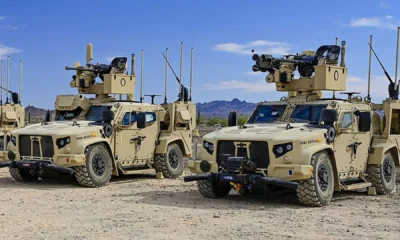ASSESSMENTS
Toxic Imports and Economic Sabotage: Why Is Somaliland Letting Poison In?
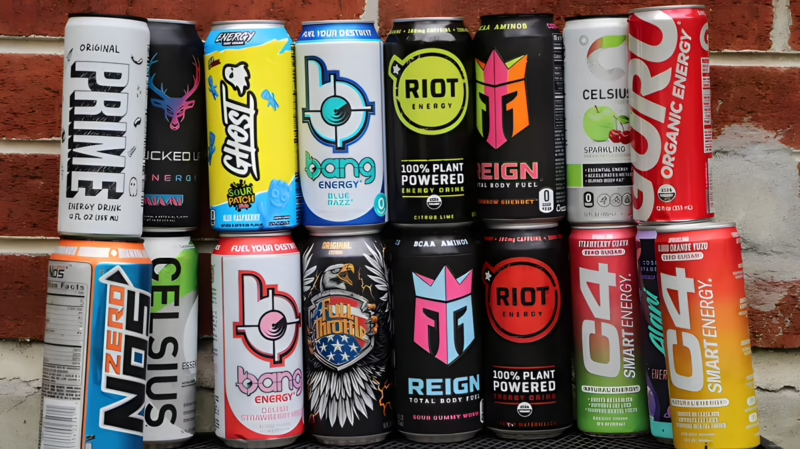
As diseases spike from unsafe beverages flooding our markets, our local champion—Somaliland Beverage Industries—faces unfair competition. This isn’t just bad trade policy. It’s a national failure.
Somalilanders are facing a crisis. Substandard beverages from outside our borders are making people sick—and our own companies like SBI are being pushed out. It’s time to ask: Who is protecting the people?
The time has come for Somaliland’s government to answer the pressing question plaguing our nation: why are unsafe, adulterated beverages flooding our markets, leading to a surge in diseases previously unknown in our land? This is not just a matter of poor health; it is a crisis that threatens the future of our people and our sovereignty. The ongoing importation of these harmful beverages must be addressed without delay, and the government must take immediate steps to protect our local industries, particularly Somaliland Beverage Industries (SBI)—a beacon of local investment and prosperity.
A Public Health Crisis: Unseen Diseases and Unsafe Products

Recent reports have highlighted a disturbing increase in diseases linked to imported beverages that do not hold up to the standards of quality we expect. Health experts are sounding the alarm, warning us that beverages with questionable ingredients and expiration dates are increasingly saturating our markets. The consequences are dire: with rising cases of non-communicable diseases like diabetes, cardiovascular issues, and cancers attributed to sugary, frequently expired products, it is evident that imported beverages are playing a significant role in this public health crisis.
The Somaliland constitution explicitly protects “Made in Somaliland” products, and by doing so, recognizes the value of our own industry. So why is the government allowing foreign beverages from countries like Yemen and Ethiopia to flood in through dubious channels, effectively undermining local businesses while exposing our population to hazardous products? The law is clear, yet enforcement seems to be lacking.
Discrimination Against Somaliland Beverage Industries

What’s particularly disheartening is the treatment of Somaliland Beverage Industries, a company founded by billionaire Ahmed Osman Guelleh in 2010 and the largest beverage corporation in Somaliland. SBI not only produces quality drinks that meet our standards, but it also uplifts the local economy by creating jobs and driving innovation. Yet, while other businesses blatantly violate trade regulations without consequence, SBI is systematically crippled by unfair competition from imported beverages.
This begs the question: why are we prioritizing foreign companies over our own? Other firms operating in Somaliland, despite being owned by outside interests, thrive under the protection of the local government. Why, then, does SBI face barriers that threaten its survival? The lack of government support for our national company is detrimental to the very fabric of our economy.
Exploiting Loopholes: An Industry Under Siege

The tremendous influx of substandard beverages leveraging loopholes in the taxation system further exacerbates this crisis. The government remains silent while low-quality imports, often expired, find their way into our markets, competing unfairly against quality products made by Somalilanders for Somalilanders. It is imperative to remember that our country adopted national trade requirements to protect local goods. It’s time our government enforced these laws with the vigor they deserve.
Moreover, there is a clear correlation between the increase in imported sugary beverages and a spike in non-communicable diseases among our residents. This health crisis cannot be ignored any longer. The heavy taxation of non-essential commodities, including imported beverages, skin whitening creams, cigarettes, and chat, should be implemented as part of a comprehensive health policy. By doing so, we will not only protect our citizens but also fortify the local economy.
The Government Must Act; We Deserve Better
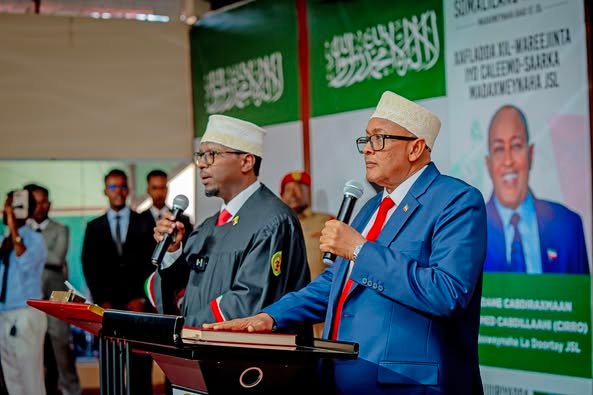
The current trajectory of our import policies and health standards is unsustainable. Failure to act on this issue will lead to an irreversible public health crisis, further entrenching Somaliland’s reliance on foreign entities while stifling our local industries. Somalilanders—our children, our families—deserve better than to be fed poison in the form of inferior beverages.
It is time for the Somaliland government to acknowledge these pressing issues and take decisive action. This includes:
Regulating and Monitoring Imports: Implement stricter guidelines on the importation of beverages to ensure products meet safety standards.
Supporting Local Industries: Give more support and resources to Somaliland Beverage Industries and other local businesses, fostering a spirit of national pride and economic resilience.
Implementing Smart Taxation Policies: Introduce heavy taxes on unhealthy imported goods to discourage consumption and protect public health.
Campaign for Public Awareness: Educate the public about the dangers of consuming these products and promote the benefits of local alternatives.
Strengthen Health Systems: Invest in healthcare systems to handle the increase in diseases linked to these products and ensure that health experts are empowered to make recommendations that serve the public good.
The issue at hand is about more than just beverages; it is about the wind of change that must blow through the halls of our government. Somaliland can no longer allow negligence regarding health and local economic survival. We must demand that our leaders prioritize the safety of our citizens and the future of our homegrown industries.
How Toxic Imports Are Fueling Disease and Undermining Local Industry
Somaliland’s Crackdown: Yemeni Nationals Arrested for Repackaging Expired Medicine
ASSESSMENTS
Why U.S. Intelligence Is Quietly Reassessing Somaliland
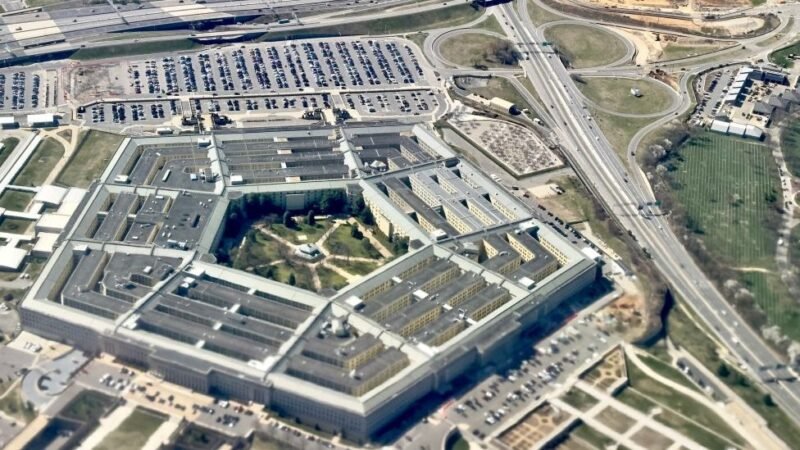
What Mogadishu says publicly and what regional security dynamics reveal privately are now moving in opposite directions, and the gap between the two is no longer theoretical. It is operational. Somalia’s categorical denials of illicit maritime arms trafficking and external security coordination are not statements of fact. They are instruments of pressure management designed to preserve donor confidence, suppress scrutiny, and delay accountability while the strategic environment deteriorates in real time.
This contradiction became impossible to ignore after an Israeli deputy foreign minister publicly confirmed discreet communication with Mogadishu, a disclosure that directly undermined Somalia’s official narrative of isolation and ideological consistency. When a government denies the existence of a threat while quietly seeking assistance from one of the world’s most advanced maritime intelligence states, it is not diplomacy. It is distress signaling. The denial itself becomes evidence.
The Red Sea threat environment has evolved beyond piracy, beyond terrorism, and beyond ideology. It is now a networked system where weapons flows, militant financing, maritime sabotage, and proxy influence reinforce each other. Analysts who continue to treat these as separate files are misreading the battlefield. The Bab el Mandeb is no longer threatened by singular actors but by convergence. Every unmonitored coastline segment becomes a force multiplier for instability. Every permissive port becomes a logistical accelerant.
Somalia’s southern coastline remains structurally incapable of enforcing maritime control at scale. This is not an accusation. It is an observable condition confirmed by the absence of sustained interdictions, prosecutions, or maritime domain awareness outputs. The insistence that no data exists is not credible in an era where satellite tracking, commercial shipping intelligence, and multinational naval patrols generate constant visibility. In intelligence terms, absolute denial in the presence of ambient data is assessed as narrative containment rather than situational awareness.
This matters because global shipping, energy routes, and supply chains do not respond to statements. They respond to risk. As the threat picture in the Gulf of Aden tightens, Washington’s focus has shifted away from symbolism and toward utility. Ports are no longer evaluated by flags but by governance. Coastlines are no longer judged by recognition status but by control. In this recalibration, Somaliland quietly emerges as the region’s most underleveraged strategic asset.
Unlike its southern neighbor, Somaliland administers a coastline with continuity, enforces port governance with relative transparency, and operates without the fragmentation that undermines enforcement elsewhere. For three decades, this stability was framed as a moral argument. Today, it is a security instrument. In Washington, especially within Senate and defense circles, the conversation is no longer whether Somaliland deserves recognition in principle but whether continued avoidance constitutes a liability in practice.
This shift explains the growing interest in Berbera as more than a commercial port. It is being assessed as a redundancy node for maritime security, a logistics alternative in an increasingly congested and surveilled Djibouti environment, and a platform for partnerships that do not require U.S. forces to substitute for local capacity. Stability that does not demand supervision is rare. That rarity has value.
Meanwhile, Mogadishu’s quiet outreach to Israel confirms another reality. Traditional partners have failed to deliver the intelligence penetration and maritime control required to manage the evolving threat. When ideological posture collapses under operational necessity, governments look for capability, not consensus. Israel offers maritime surveillance, signals intelligence, and interdiction experience that Somalia’s existing partners either cannot provide or will not provide without conditions Mogadishu cannot meet.
This dual reality public denial paired with private outreach is unsustainable. It signals a system under strain. It also accelerates external decision making. In intelligence assessment, prolonged narrative divergence precedes forced correction events. Those events typically arrive in the form of exposed supply chains, interdicted shipments with attribution, or incidents affecting international shipping that trigger rapid diplomatic realignment.
For the United States, the implications are increasingly clear. The Horn of Africa cannot be stabilized through rhetoric or aid alone. It requires reliable local partners capable of enforcing order without collapsing under pressure. Somaliland fits this requirement more cleanly than any other actor along the Gulf of Aden. This does not necessitate immediate recognition. It necessitates institutional engagement that reflects reality rather than legacy policy.
Security cooperation, port governance partnerships, intelligence sharing, and formalized commercial engagement are already easier to justify than they were twelve months ago. Congressional language is shifting. The logic of maritime security is compressing timelines. What once appeared politically sensitive is now operationally rational.
The strategic mistake would be to wait for crisis confirmation. By the time a disruption forces action, leverage narrows and costs rise. The more disciplined approach is to act before convergence becomes collapse. Somaliland’s value is not hypothetical. It is measurable in what does not happen along its coast.
The Horn of Africa is entering a phase where denial is no longer a defensive strategy. It is an accelerant. Those who can enforce order will shape outcomes. Those who cannot will be bypassed. The Red Sea does not reward narratives. It rewards control.
For Washington, the choice is approaching clarity. Engage the actors who already secure the corridor or continue outsourcing stability to governments that deny what everyone else can see. The clock is not loud, but it is running.
ASSESSMENTS
The Two-Front War for Somaliland’s Survival
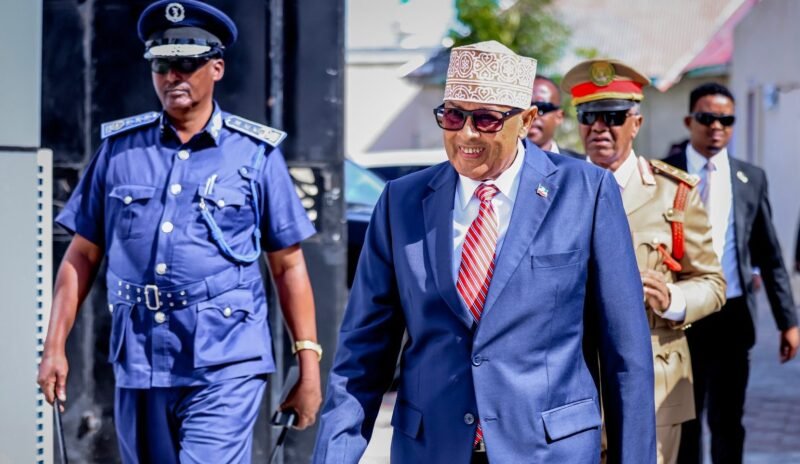
SOMALILAND UNDER ATTACK FROM FOREIGN POWERS AND TRAITORS!
Somaliland finds itself in the midst of a defining struggle for national survival—one that is being waged simultaneously on geopolitical, digital and domestic fronts.
It is a two-front war: one driven by the strategic ambitions of foreign states, and another fueled by internal actors whose allegiance has shifted from national interest to personal gain or external influence. The convergence of these threats has placed the Republic of Somaliland in a precarious but clarifying moment.
At the center of this rising hostility lies Somaliland’s geography. The Port of Berbera, one of the most strategically valuable maritime gateways in the Horn of Africa, has transformed the nation into a pivotal global asset.
With that prominence comes intensified pressure. China, Turkey, and the Federal Government of Somalia each have overlapping reasons to constrain, undermine or directly challenge Somaliland’s sovereignty.
China’s hostility stems from Hargeisa’s diplomatic alignment with Taiwan, a partnership that elevated Somaliland’s international visibility but also placed it firmly within Beijing’s red lines.
The conflict in Las Anod stands as a stark example of the geopolitical stakes. Intelligence assessments from regional actors have long indicated that foreign financing—including Chinese-linked channels—played a role in sustaining armed militias in Sool.
For Somaliland, Las Anod was not simply an internal crisis but part of a broader regional contest in which major powers leveraged local grievances for strategic gain.
Yet the more destabilizing threat may not be external at all. It is the emergence of domestic actors who, willingly or for profit, have become conduits for foreign agendas.
These individuals—many operating from abroad—exploit tribal divisions, distort political debates, and weaponize social media platforms such as TikTok and Facebook to amplify discord.
Their motivations are varied: some are funded by foreign governments seeking to weaken Somaliland’s cohesion, while others are propelled by internal rivalries and a desire for political disruption. Their impact, however, is singular: they erode public trust and weaken national unity.
The Borama incident illustrates how quickly localized disputes can be manipulated into national crises. In this environment, Somaliland’s security institutions must broaden their definition of national defense to include digital and information warfare.
A comprehensive report identifying the key digital agitators, their financial backers, and their foreign connections is no longer optional—it is essential.
Somaliland’s survival will require a coordinated strategy that addresses both fronts of this conflict. The government must bolster cybersecurity, regulate social media manipulation, and work with telecommunications firms to curtail coordinated campaigns designed to provoke unrest.
At the same time, accountability must extend to journalists and media personalities who knowingly advance foreign narratives under the guise of domestic commentary.
For Somalilanders committed to the country’s stability, the moment calls for active engagement. Cooperation with government institutions, security agencies, and traditional leaders is now a civic responsibility.
The threats confronting Somaliland do not come solely from hostile foreign governments—they also come from within, shaped by voices willing to trade national security for visibility, money, or influence. Defending the nation requires confronting both.
ASSESSMENTS
Somaliland Reassesses Geopolitical Risks After Borama Incident

GOVERNMENT WARNS: UNITY IS OUR SHIELD AGAINST EXTERNAL MANIPULATION.
The security incident in Borama has quickly evolved from a localized disturbance into a moment of strategic reckoning for Somaliland’s leadership.
What initially appeared to be a contained episode of unrest is now driving a deeper reassessment within Hargeisa, where policy officials increasingly view domestic instability through a geopolitical lens rather than an internal one.
Internal government assessments reviewed by WARYATV describe a sobering shift: Somaliland is no longer insulated from the broader regional contest unfolding across the Horn of Africa and the Red Sea corridor.
The Borama incident, senior officials argue, is a stark demonstration that even minor internal disruptions carry the potential to be exploited by external actors seeking to reshape influence in one of the world’s most strategically contested regions.
This conclusion marks a departure from earlier decades, when internal rifts were largely resolved through traditional, community-led structures with minimal fear of foreign manipulation.
The regional environment has since transformed.
The devastation in Sudan and the chronic fragility of Somalia have become cautionary examples of how local conflicts can metastasize once regional or international players intervene—intentionally or otherwise.
In this context, the directive emerging from Hargeisa is decisively twofold. Externally, the government is preparing to engage key diplomatic partners with a unified narrative: that the unrest in Borama was swiftly contained and does not signal national fragility.
Officials say preventing geopolitical rivals from reframing the episode as a sign of systemic weakness is crucial. The government intends to emphasize resilience, institutional maturity, and a demonstrated capacity to manage crises without international intervention.
Internally, the focus is turning toward fortifying national unity through traditional leadership. Senior policymakers stress that the historical and demographic weight of Awdal and Salel requires an approach grounded in dignity, respect, and reconciliation.
This includes activating traditional mediation networks and creating depoliticized communication channels capable of preventing escalation before regional actors can exploit emerging tensions.
The prevailing sentiment—echoed both in government circles and across Awdal—is that Somaliland’s greatest defense lies not only in its armed forces but in the coherence of its social fabric.
In a region where external actors consistently seek leverage in local fragilities, unity becomes a strategic asset.
The Borama incident has reinforced this reality: Somaliland’s long-term stability will depend as much on the wisdom of its people as on the security capabilities of the state.
ASSESSMENTS
Hamas Finds New Home in Pakistan

A classified intelligence assessment shared with WARYATV reveals growing alarm within Western and Israeli security circles that Pakistan has quietly become Hamas’s newest operational theater, with senior Hamas envoys now openly conducting propaganda, recruitment, and coordination activities across Pakistani soil — often with the implicit blessing of political and religious elites.
At the center of this disturbing network is Naji Zaheer, Hamas’s “special representative” in Pakistan.
Once a fringe figure, Zaheer has, since the October 7 2023 massacre in Israel, emerged as a fixture on Pakistan’s Islamist circuit — appearing at rallies alongside leaders of Lashkar-e-Taiba and Jaish-e-Muhammad, both U.S.-designated terrorist organizations.
His appearances blur the line between political activism and terror coordination.
According to sources briefed on Western monitoring reports, Zaheer’s movements across Peshawar, Karachi, and Rawalakot follow a deliberate pattern: fusing Hamas’s anti-Israel narrative with Pakistan’s jihadist grievances, particularly over Kashmir.
The February 2025 “Kashmir Solidarity and Al-Aqsa Flood Conference”, which gathered Hamas, Pakistani legislators, and Kashmiri militants under one banner, is now viewed in Washington and London as the symbolic moment Hamas and Pakistan’s jihad ecosystem formally merged.
Even more concerning is the role of Pakistan’s Senate, which in early 2024 hosted Hamas representatives including Khaled Qaddoumi, Hamas’s envoy in Tehran.
Intelligence officials say this level of access “would not have been possible without tacit government consent.” The optics — Pakistani lawmakers applauding a movement the West labels a terrorist organization — have badly damaged Islamabad’s standing with counterterror partners.
“Pakistan is no longer just a sanctuary for the Taliban — it’s fast becoming Hamas’s external incubator,” one senior European counterterrorism official told WARYATV on condition of anonymity. “This is not rogue clerics; this is systemic political cover.”
Western security sources are now assessing whether Hamas’s outreach in Pakistan is being quietly backed by Iran’s Quds Force, using Pakistani territory as a safe communications hub and potential recruitment pipeline.
Analysts warn this could compromise Pakistan’s Major Non-NATO Ally status and trigger sanctions under U.S. counterterrorism laws.
Britain’s intelligence community has reportedly begun examining financial flows between Pakistani religious charities and Hamas-linked organizations in Malaysia and Turkey.
U.S. officials, meanwhile, are evaluating whether Pakistan’s tolerance of Hamas envoys violates the FATF (Financial Action Task Force) anti-terror financing obligations that Islamabad only recently escaped.
This would mark a strategic shift: Hamas, bloodied in Gaza, exporting its ideology eastward to rebuild through South Asian Islamist networks.
For Islamabad, the cost could be immense — diplomatic isolation, suspended aid, and renewed counterterror blacklisting.
For now, the message from Western intelligence is blunt: “If Pakistan wants to remain a partner in the fight against terror, it cannot host its architects.”
ASSESSMENTS
Exposed: How Somalia’s Prime Minister Turned UK Diaspora Votes Into a Foreign Influence Operation
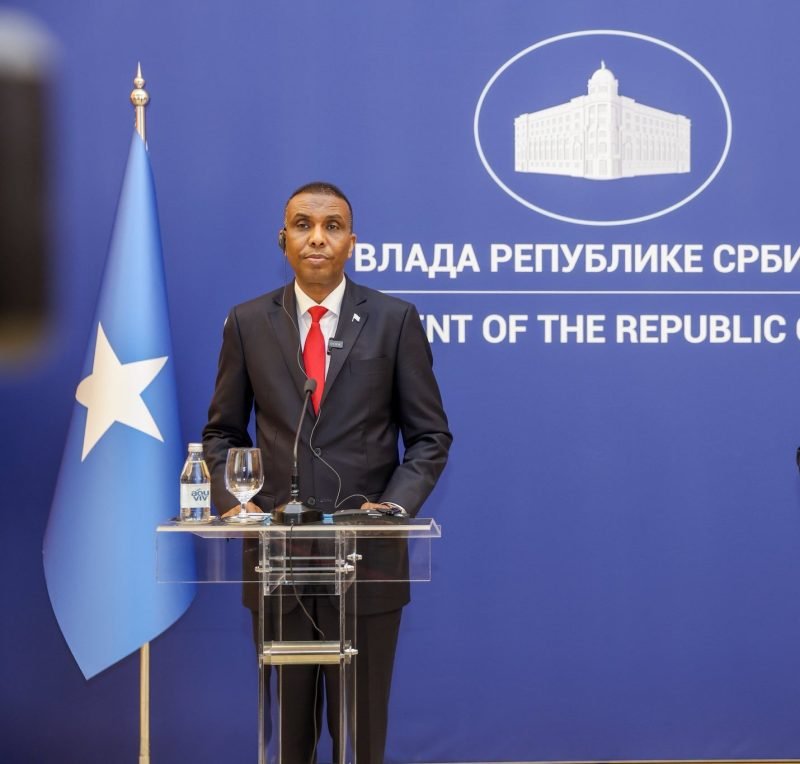
The recent outburst by Somali Prime Minister Hamza Abdi Barre, urging Somali-British voters to “use your votes to defend Somalia’s unity” against UK MPs supporting Somaliland, has triggered alarm bells inside Britain’s national security architecture.
According to confidential sources within UK intelligence circles, an ongoing inquiry is examining whether Barre’s appeal was part of a foreign-directed influence campaign designed to shape the UK’s parliamentary stance on Somaliland — possibly with the quiet assistance of non-Western powers.
Intelligence Assessment: A Coordinated Incitement
UK investigators believe the Prime Minister’s remarks went beyond typical diaspora outreach.
His speech, amplified through coordinated WhatsApp channels, Telegram groups, and Somali-language Facebook pages hosted outside the UK, had identifiable hallmarks of foreign orchestration — rapid message replication, identical talking points, and cross-platform bot amplification.
One senior UK official described it as “a textbook diaspora activation maneuver — except this time, it came straight from a head of government.”
British intelligence agencies are now tracing funding trails from Mogadishu’s Ministry of Information and the Somali embassy in London to recently reactivated lobbying fronts, some of which appear to share digital infrastructure with influence networks previously attributed to Chinese and Turkish contractors.
Strategic Context: When Aid Turns Against the Donor
The UK has spent over £1.8 billion in development and security assistance in Somalia since 2000 — paying civil-service salaries, training security forces, and bankrolling governance reforms that sustain the very office now accused of subverting British politics.
Analysts warn that Barre’s move risks weaponizing Britain’s own Somali aid investment against it, by mobilizing UK citizens in pursuit of Mogadishu’s foreign-policy agenda.
“This isn’t about Somaliland anymore,” one Whitehall source told WARYATV. “It’s about a foreign leader using British taxpayers’ money — literally — to fund a political campaign targeting British MPs. That’s a red line.”
Shadow Actors: Who Benefits?
Intelligence briefings obtained by WARYATV UK suggest the episode may fit a broader pattern of proxy influence in Western democracies.
China has quietly expanded digital-media partnerships with Somali state broadcasters under its Belt and Road media initiative, providing training on “strategic communication.”
Turkey, a major security patron of Mogadishu, maintains intelligence-sharing protocols with the Somali Ministry of Security.
Russia’s Wagner-linked media outlets have been observed boosting anti-Somaliland hashtags aligned with Mogadishu’s position.
The concern, UK analysts say, is that Barre’s messaging — intentionally or not — could be serving as an open conduit for adversarial states seeking to exploit diaspora divisions and test Britain’s electoral-resilience frameworks ahead of its next general election.
Domestic Fallout: Dividing the Somali-British Community
Inside the UK, the Prime Minister’s appeal has already polarized Somali communities. Somaliland-origin residents report intimidation online and in mosques, while unity-leaning activists claim they are “defending Somalia’s sovereignty.”
Police in London and Birmingham have quietly upgraded community-tension alerts following incidents of verbal threats referencing the PM’s speech.
Security experts caution that diaspora politics — long tolerated as a transnational echo of homeland disputes — is now bleeding directly into Britain’s political ecosystem.
Diplomatic Shockwave
Downing Street has not commented publicly, but insiders confirm that the Foreign Office has lodged a formal expression of concern with the Somali embassy.
The case is expected to trigger a Cabinet Office counter-interference review, similar to those previously applied to Russian and Iranian diaspora networks.
If the probe finds that Somali government officials, knowingly or otherwise, facilitated a campaign targeting UK lawmakers, it could trigger:
Suspension of bilateral aid disbursements to Mogadishu’s central ministries.
Travel-visa restrictions on officials involved.
Expanded foreign-influence registration requirements for UK-based Somali political organizations.
What makes this episode unprecedented is not that a foreign government sought to shape diaspora sentiment — but that a sitting African prime minister openly directed it against a Western parliament, while his administration remains financially dependent on that same Western donor.
If confirmed, it would mark the first instance of an aid-recipient government triggering a counter-interference probe in the UK.
“Hamza Abdi Barre may have misread the moment,” one Whitehall source told WARYATV. “He turned a sovereignty speech into an intelligence incident.”
The Bigger Picture
The UK investigation now underway is quiet but serious. What began as a rhetorical counter to Somaliland’s growing recognition campaign may end as a case study in how fragile African politics can be weaponized inside Western democracies.
As London weighs its next steps, one question reverberates through both intelligence circles and Somali diaspora halls:
Was this Mogadishu’s miscalculation—or someone else’s design?
ASSESSMENTS
The Strike No One Saw Coming: Inside AFRICOM’s Classified Somalia Operation

Sources say Omar was a double agent linked to Al-Shabaab logistics, and the U.S. acted on classified intelligence local commanders never saw.
The killing of Caaqil Omar Abdillahi Abdi in a U.S. airstrike on September 13, 2025, has stirred outrage in Puntland and across the Sanaag region. But beneath the denials and emotional condemnations lies a deeper, more complex reality — one that exposes the intelligence gap between U.S. Africa Command (AFRICOM) and local Somali authorities, and the dangerous consequences of asymmetric information in counterterrorism operations.
WARYATV’s security sources confirm that AFRICOM does not share every layer of intelligence with regional partners, including Puntland’s security and administrative leadership.
The reason, as multiple Western and regional defense officials have explained, is simple: not all intelligence is created equal.
Some operations rely on classified human or signals intelligence (HUMINT/SIGINT) streams that cannot be shared with local counterparts due to risks of compromise or conflicting loyalties within regional forces.
According to sources familiar with the matter, Omar Abdillahi Abdi was not the innocent elder he appeared to be.
Intelligence obtained by WARYATV suggests that Omar had for months operated as a double agent — publicly acting as a community elder and mediator, while secretly facilitating arms shipments and logistics for a shadow network tied to both Al-Shabaab intermediaries and foreign smuggling interests moving through the Gulf of Aden.
AFRICOM’s decision to strike without prior coordination reportedly stemmed from high-confidence intelligence — derived from classified ISR (Intelligence, Surveillance, and Reconnaissance) assets — that placed Omar at the center of a logistics meeting with known facilitators connected to Al-Shabaab’s procurement wing.
That data, WARYATV understands, was confirmed through multi-source analysis but not disseminated to Puntland’s regional chain of command, precisely to avoid operational leaks.
This explains why Governor Said Ahmed Jama, Brig. Gen. Abdillahi Omar Anshuur (commander of the Puntland Dervish Forces’ 9th Division), and Col. Aden Ahmed Ali (Regional Police Commander) all expressed disbelief and confusion.
They were never briefed on the classified intelligence AFRICOM was acting on — and by design, they couldn’t have been.
U.S. operations often bypass local structures when targets are believed to have infiltrated community or clan leadership circles, a practice intended to prevent counterintelligence compromise.
In this case, it appears AFRICOM’s silence toward Puntland’s leadership wasn’t negligence — it was operational necessity.
The regional authorities, including the Governor’s office and police command, were only informed post-strike, once AFRICOM had confirmed the target’s elimination.
A senior intelligence officer who spoke to WARYATV on condition of anonymity described Omar’s profile as “one of those hard duals — men who speak the language of peace by day but move the currency of war by night.” He added, “AFRICOM had actionable data — signals, phone intercepts, and satellite feeds — that local intel did not have access to. It wasn’t personal. It was procedural.”
This incident underscores the structural divide between foreign precision operations and local governance realities.
Somali commanders must maintain political legitimacy and public trust — but the U.S. military operates under global counterterrorism protocols that prioritize target certainty over local consultation.
The tragedy, however, is twofold: on one hand, the U.S. may have neutralized a covert operator working against national security; on the other, the secrecy surrounding the operation risks alienating the very communities it aims to protect.
As protests continue in Sanaag, the incident highlights a recurring dilemma: when intelligence isn’t shared, truth becomes contested. The local officials may have spoken sincerely — but sincerity doesn’t always mean full awareness.
US Confirms Airstrike Killed Somali Elder, Calls Him Al-Shabab Weapons Dealer
ASSESSMENTS
Somalia’s Risky Pact with Pakistan Sparks Regional Alarm

Somalia’s Dangerous New Alliance: A Pact That Undermines Regional Stability and Vindicates Somaliland’s Path.
MOGADISHU — Somalia’s newly approved five-year defense pact with Pakistan signals more than military cooperation—it represents a dangerous geopolitical gamble that threatens to destabilize the Horn of Africa and undermine fragile regional security.
The agreement, which includes Pakistani assistance in naval modernization, counter-piracy operations, defense technology transfers, and training for Somali officers, has been celebrated in Mogadishu as a step toward “strengthening sovereignty.”
Yet to regional analysts, the move looks more like a calculated surrender of sovereignty—an open invitation for external powers to turn Somalia’s coastline into a proxy battlefield.
The underlying concern is not merely technical aid; it is the strategic encroachment of Pakistan and its close ally Turkey into the Horn’s maritime domain.
Both nations now seek to expand military and intelligence influence across Somalia’s coastal and naval structures, effectively establishing a new arc of control stretching from the Arabian Sea to the Gulf of Aden.
This alignment places Mogadishu squarely in the crosshairs of South Asia’s enduring rivalry between India and Pakistan—a conflict Somalia has no strategic reason to inherit.
For New Delhi, the agreement is more than an irritant—it is a red flag. Indian officials view Pakistan’s naval expansion into the western Indian Ocean as a direct security threat, especially near vital shipping routes and energy corridors.
By opening its ports and defense institutions to Islamabad, Mogadishu risks transforming its fragile state into a theater for great-power competition, echoing Cold War patterns that left Africa divided and dependent.
This reckless militarization also arrives amid Somalia’s ongoing alignment with China in its diplomatic standoff against Taiwan, further exposing a government driven by transactional alliances rather than coherent strategy.
In a nation still struggling to rebuild governance and trust, these external military ties are likely to deepen corruption, fuel factionalism, and erode national unity.
By contrast, Somaliland’s foreign policy stands out as a model of restraint and foresight. While Mogadishu chases short-term military relevance through risky foreign entanglements, Hargeisa continues to pursue stability through economic diplomacy, transparency, and regional integration.
Projects like the Berbera Trade Corridor, supported by the United Kingdom and private partners, illustrate how Somaliland turns geography into opportunity rather than conflict.
Somalia’s new pact exposes a deeper truth: the difference between dependency and sovereignty. Somaliland’s approach—anchored in peaceful partnerships, open trade, and institutional integrity—offers a vision of regional security built on development, not militarization.
As Mogadishu hands its coastline to foreign powers, Somaliland strengthens its case for international recognition—not through slogans, but through performance.
While Somalia invites instability, Somaliland builds stability.
ASSESSMENTS
Neutralizing the Houthi Threat: A Strategic Blueprint for the Red Sea

The United States faces a renewed and dangerous test in the Red Sea. Months of strikes earlier this year damaged Houthi infrastructure but failed to eliminate the group’s threat.
By July, the Houthis had struck two bulk carriers and fired a missile toward Israel, proving their ability to regroup and reminding the world of the limits of short-term campaigns. Behind them stands Iran, which treats the Houthis as a low-cost proxy to bleed American resources, unsettle allies, and disrupt the global economy.
The Bab el-Mandeb Strait carries nearly 15 percent of global trade. Every attack on a ship inflates insurance premiums, diverts traffic around Africa, and pushes up consumer prices worldwide.
The Somali piracy crisis of the 2000s nearly paralyzed maritime trade, but today’s threat is sharper, rooted not in profit but in ideology and geopolitics. Left unchecked, it risks giving both Tehran and Beijing leverage over one of the world’s most vital shipping corridors.
The spring strikes revealed a fundamental imbalance: the cost of each U.S. missile dwarfs the expense of a Houthi drone or rocket, yet the economic and political consequences of disruption far outweigh the Houthis’ losses.
That asymmetry demands a sustained and integrated campaign, not episodic retaliation. Washington must combine persistent military pressure with economic isolation and political maneuvering.
Drone surveillance and precision strikes must be relentless, maritime exclusion zones enforced without hesitation, and cyber operations used to paralyze Houthi command networks.
At the same time, Yemen’s most capable anti-Houthi forces must be strengthened on the ground, from the Joint Forces along the Red Sea coast to tribal militias in Marib. Their progress will deny the Houthis sanctuary and demonstrate that military pressure has political backing.
Economic measures are just as important. Trade diversion through ports like Aden, Mukalla, and Berbera can deny the Houthis customs revenue and reinforce alternatives beyond their reach.
Sanctions must target Iranian shipping and financial networks that sustain Houthi smuggling. Diplomatically, Oman must be pressed to close its border to arms flows, while Gulf allies should be drawn into burden-sharing and legitimacy-building.
Critics warn of escalation, but the greater danger lies in drift. Allowing the Houthis to operate unchecked will deepen instability, embolden Iran, and weaken U.S. credibility at a moment when China is eager to expand its influence over global trade.
The Red Sea is too strategic to leave vulnerable. Victory will require persistence and political will, but the alternative is a cycle of disruption that carries far higher costs.
-

 Analysis10 months ago
Analysis10 months agoSaudi Arabia’s Billion-Dollar Bid for Eritrea’s Assab Port
-

 Opinion17 years ago
Opinion17 years agoSomaliland Needs a Paradigm Change: Now or Never!
-

 Interagency Assessment4 days ago
Interagency Assessment4 days agoTOP SECRET SHIFT: U.S. MILITARY ORDERED INTO SOMALILAND BY LAW
-

 ASSESSMENTS9 months ago
ASSESSMENTS9 months agoOperation Geel Exposes the Truth: International Community’s Reluctance to Embrace Somaliland as a Strategic Ally
-

 Somaliland11 months ago
Somaliland11 months agoSomaliland and UAE Elevate Ties to Comprehensive Strategic Partnership
-

 EDITORIAL1 year ago
EDITORIAL1 year agoDr. Edna Adan Champions the Evolving Partnership Between Somaliland and Ethiopia
-

 ASSESSMENTS6 months ago
ASSESSMENTS6 months agoA Critique of the Hassan Sheikh Mohamud Administration and the Halane Enigma
-

 Africa2 years ago
Africa2 years agoHow Somaliland Could Lead the Global Camel Milk Industry










